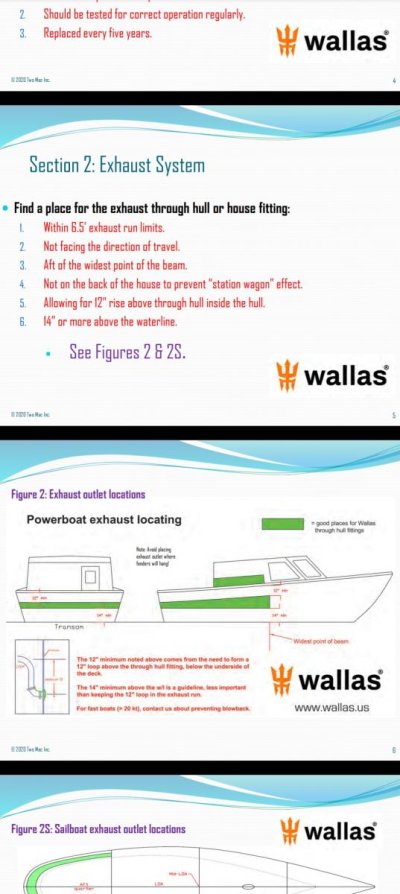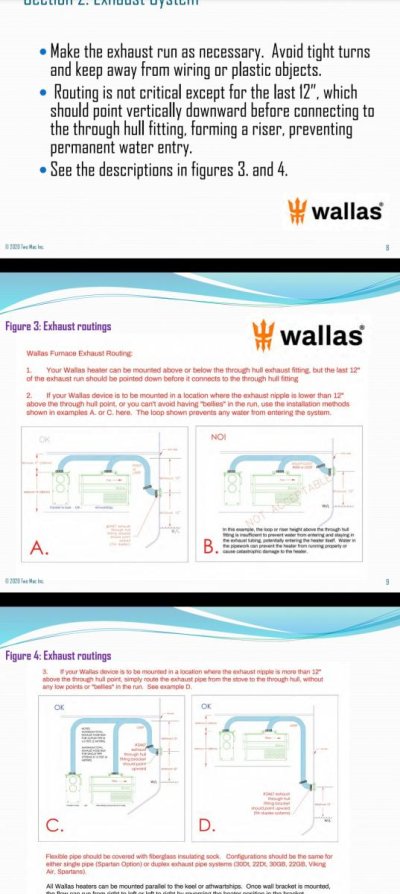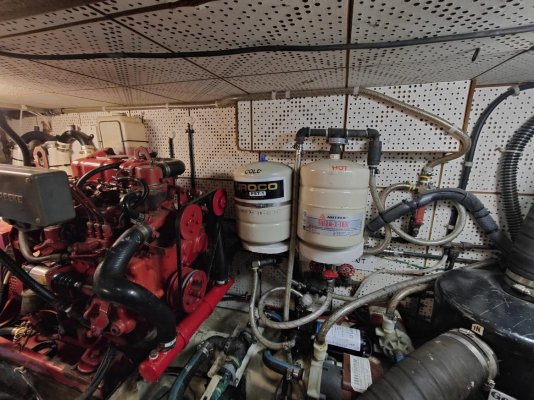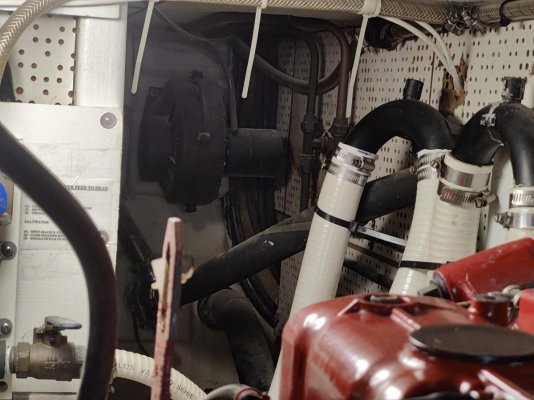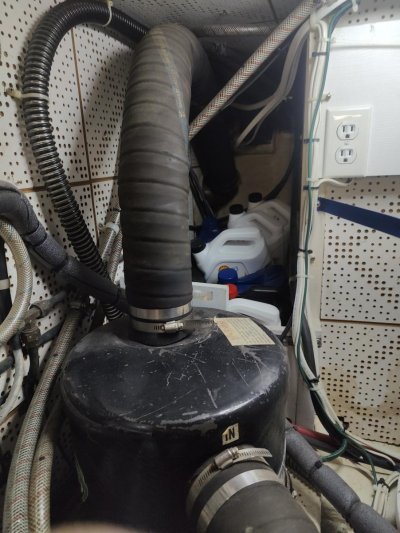Air exhaust, no, you wouldn't need an exit vent hole in your boat. The air will naturally leak out through the small gaps in your window, doors, wiring runs, etc. That is probably preferable to having a single exhaust vent anyway since your moist air will be naturally flushed out from many points instead of a single place.
Cold air intake, you just need a reliable source of outside air that can effortlessly feed the one or two 3-1/2"-4" diameter duct(s) to your heater. That can be from a vent fitting on the side of a cabin wall or somewhere on your flybridge, a dorade box on your roof, from underneath an overhang or even a locker if it passed enough air freely and didn't otherwise stink with mold or have a risk of blocking your vent with equipmet.
A 4" diameter duct has about 13 square inches of area so wherever you draw air from, you want at least that same open area between the end of your intake duct to the outside. If you were drawing air from some type of locker for example, you would want that locker to also have an opening to the outside world that is at least 1" x 13" or 2" x 6-1/2", or etc. so that the air flow you are drawing can easily be supported without causing the heater to have to "suck" the air.

